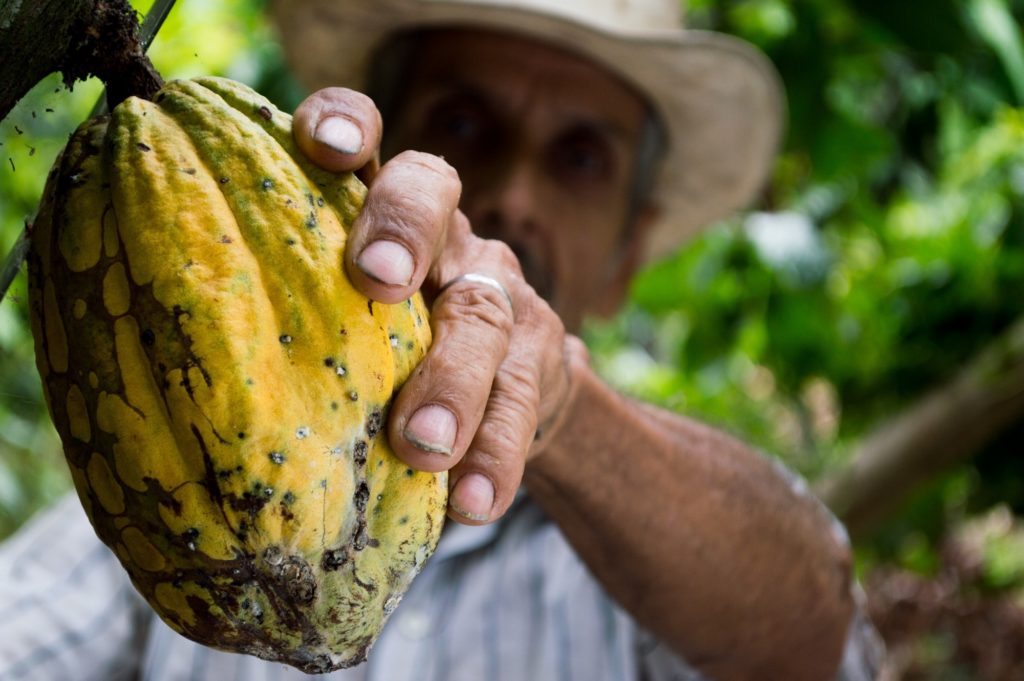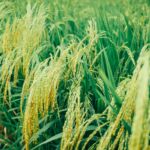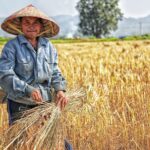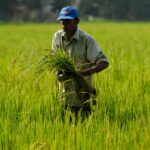There is growing concern about impact measurement tools and methodology. Indeed, consumers’ growing demand for clean and responsible products has created a tidal wave that is translated by buyers, companies and donors in new requirements and impacts from supply chain stakeholders. This movement is actively transforming agricultural production systems. But at the end of the day, the most important link of the chain, which accounts for more than 70% of food production in the world, remains the smallholder farmers. Improving practices of smallholder farmers is critical to adapt to new standards resulting from the climate crisis underway, and build more resilient food production chains. That said, improving smallholder farmers practices is hard and takes time. Taking their perspective is important to get this right. What’s in it for them? Are farmers concerned about methane emission from a rice field while they don’t have enough to sustain their own livelihoods? So, how to conceal global priorities and day-to-day farmers’ local concerns? Agriculture needs to change and become more sustainable. That’s really a no brainer. That can happen only with pertinent translation of buyers and donors priorities into actions that can be positively welcomed at village level. It is thus major to understand who smallholder farmers are, their needs and constraints in order to involve them in their agriculture transformation which will use less artificial inputs that the green revolution have been promoting for the past 50 years. This blog’s objective is to describe several tips which can significantly improve the understanding, and thus the broad adoption of more sustainable agricultural practices from farmers.
What Farmers Expect When Considering a New Agricultural Practice?
By new practices we refer to the introduction of technologies that can save production factors (labor, land, capital), more resilient hybrid or rustic varieties, or cultivation operations that improve soil fertility or decrease GHG emissions, for instance composting crops straws and stubbles rather than burning them.
It that perspective, introducing farmers to something new may appear at first glimpse as an extra risk or burden for the farmer. That’s why it is important, first of all, to explain the rational (rooted in current practice context) of this change to get the essential feedback prior to implementation. Indeed, building ownership around a new practice is an investment which will enhance the spreading of the technic later on in the knowledge transfer process.
However, it can also happen that a new practice, tested during a pilot phase and showing clear benefits for farmers, will not experience a massive adoption when deployed at large scale. It is usually the case when a top-down approach is preferred for the sake of rapid roll-out or financial commitments fulfilment rather than farmers wellbeing.
In that respect, considering the farm “as a whole” with multiple activities is major to understand famers’ choices as part of a comprehensive strategy. The more you know about the farmers (their livelihoods and lifestyle) the more relevant will be your intervention on a specific cluster in a complex decision making machinery: timely trainings according to crop cycle, precise days and time to enrol farmers and deliver trainings, related services provision…as many details that farmers put into the balance when it comes to household resources sharing process (mainly time).
Needless to remind here that smallholder farmers:
- Have often rather low education level: They usually learn their job on the field, and copy/paste what their successful neighbors are doing.
- Operate in remote areas: They don’t have access to first hand pieces of information. They usually get advice from the closest Agri dealer. They generally don’t benefit from access to training programs on cutting-edge technologies.
- Lack capacity to invest or save money in provision for emergency situations: accident, bad weather or other. They are usually over-indebted, which prevent them to select the most profitable market options when available.
All these facts create a very strong risk aversion. As a result:
- A new practice should have beforehand proven locally its pertinence, not only from an impact perspective but also whether the farmers find it convenience or not. That’s why getting the first hand feed-back from practitioners on several crop cycle appears major.
- Secondly, the implementation process making change happen, is as much important as the content making pertinence of what needs to be changed.
How to Foster Smallholder Farmers Adoption of Sustainable Practices?
As mentioned in the previous section, a genuine adoption or sustainable long-term adoption needs ownership. Ownership implies 3 levers that are not necessarily costly in money or time.
1. Deploy Peer-to-Peer Training Approaches
First, farmers need clear and simple explanations: their time is limited, and messages need to be impactful. It’s thus much more relevant if the training is based on a peer-to-peer approach (acting as a project ambassador). Showcasing a farmer already convinced is much more powerful than an expert who is far from farmers’ lifestyle. In addition, this project’s ambassador is able to describe his own pathway up to full scale adoption that will sound even better in other farmers’ ears: “If he has been able to do this, and as I’m similar to this guy, thus I’m also able to perform the same and maybe I can do even better”.
2. Create and Manage Discussion Forums
Second, adoption requires also a good customer service; indeed, after the training and before the innovation is implemented at farm level some time has already passed and many questions can arise. Farmers are usually alone when it comes to operate at field level. A one-day training is not enough to get the level of confidence needed to succeed at the first time. That’s where the group dynamic can help. Creating spaces to exchange and discuss between farmers is a perfect tool to trigger a continuous-improvement process that will nurture farmers’ pride to perform better than their fellows. This has to be moderated and documented by someone from the project in order to integrate the outcomes of these talks to create a virtuous circle taking account of farmers’ opinion and strengthening ownership.
3. Compare Evolution of Plots to Increase Risk Aversion Management
Third, changing practices needs an adaptation period. According to the crop in question changing its habit can be very risky as agriculture is often a matter of life for subsistence farmers. This risk should never be borne by farmers even partially: as a matter of fact, it’s wiser to have smaller pilot farmers pool but with full support of their costs (including losses) during a suitable period. This shouldn’t obviously prevent the farmer to compare the new and previous practice by splitting his plot into 2 when possible, or to perform different cultural itineraries on 2 separate locations. This is often good solution to manage risk aversion even more.
How Buyers and Donors Supply Chain Stakeholders Can Contribute?
Smallholder farmers are contributing for a large part to the current food production all over the world. However, there are at the same time the most vulnerable and the most important link of the supply chain. Therefore, buyers and donors stakeholders downstream the chain should consider this matter very carefully. If tomorrow there are less farmers, consequently business and profit will decline for intermediaries. As a result, middlemen, aggregators, processors, wholesalers, collectors but also industrial and international companies should actively support farmers and considered them as partners rather than amenable resources.
The most successful projects are the one where commercial partner or local buyers have already tied genuine relationships with the community famers – providing good quality inputs in due time, setting-up an internal agronomist team or supporting their emergency expenses without usurious conditions. In short, designing a win-win situation (increasing on the one hand quality and in the other hand improving purchasing price for instance) is key to build sustainable relationships with your raw material suppliers.
Today more and more private sector-funded projects are integrating this dimension. However, benefits must be shared in a balanced collaboration where companies should provide all the capital while farmers are providing the land and the labor force.
Conclusion
Access to genuine and transparent information at economic, social and environmental level is key to legitimate a practice among farmers and we should never underestimate the capacity of the farmer to understand the constraint from other stakeholders of the supply chain. The real transformation of agriculture will definitely require a shift of our perception from a farmer who is a passive recipient to an active manager aware of his economic, social and environmental surrounding enabling to take the right decisions. That’s why technical trainings are not the only lever to empower farmer through this direction.
Hatim Issoufaly has for the past 15 years been passionated about strengthening the capacity of local development actors to achieve impact at large scale. Structuring resilient supply chains through innovative agronomic models and social structuration, enabled him to increase the net revenue of farmers while improving the quality and traceability of high risk commodities.
Hatim speaks French, English, Spanish, Bahasa Indonesia and Hindi. He holds a Master Degree in Comparative agricultural system (Agro Paristech) and a Tropical Agriculture Master degree from Montpellier School of Agronomy.






